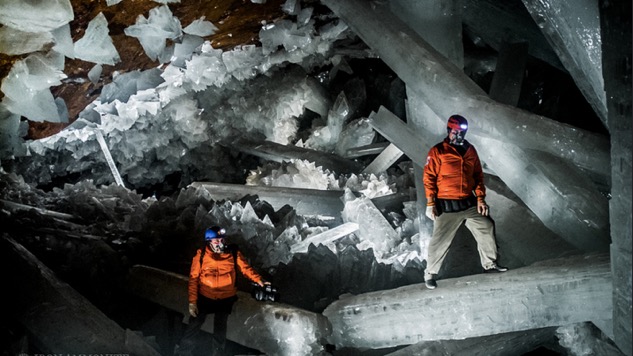Most people have heard of the Grand Canyon, Aurora Borealis and the Great Barrier Reef—three of the world’s most popular natural wonders. But what about lesser-known wonders?
Turns out, there’s a lot of them. Here are five in particular you might not be familiar with but will likely want to visit after reading about them. Their bewildering qualities are very persuasive.
Vaadhoo Island
Maldives
There is an island off the coast of southern India whose beaches glow at night. One of many Maldives islands, Vaadhoo is visual voodoo for visitors. When the conditions are right, especially on moonless nights, bioluminescent plankton react to oxygen and light up the shore, as if mirroring the thousands of sparkling stars above. Hence it’s name—the Sea of Stars. Although the rare occurrence can be witnessed elsewhere, Vaadhoo is famous for its consistent display.
Rainbow Mountains
China
If a rainbow-colored layered cake had a baby with really big mountains, this would be the result. Located in northern China and officially known as Zhangye Danxia National Park, the landscape here has, over the course of 24 million years, painted itself red, yellow and pastel blue. The Rainbow Mountains (pictured at top) are more than deserving of their name, and widely regarded as one of the most beautiful landscapes in all of China.
Crystal Cave of Giants
Mexico

Photo: Paul Williams, CC-BY
While drilling for silver 15 years ago, two unassuming miners discovered what appears to be Superman’s secret lair for watching home movies. In reality, they discovered a Cave of Giant Crystals. Located 1,000 feet underground in northern Mexico, the cave is hard to reach, crazy hot (135° Fahrenheit or 57°C) and more humid than August in the Deep South. Given the unbearable conditions, most visitors stay for no longer than 20 minutes at a time, leaving the cave largely unexplored.
Lake Hillier
Australia
Scientists still don’t know why, but there is a bubble gum pink lake in southwest Australia. First discovered in 1802, the lake is largely inaccessible. The few that visit it usually do so by plane, helicopter, or cruise. Amazingly, the pink salt water reportedly maintains its color for the lucky few—if not scofflaws—who manage to bottle a pint of the protected water.
Door to Hell
Turkmenistan

Photo: Martha de Jong-Lantink, CC-BY
In 1971, Soviet drillers found a natural gas mine near the town of Derweze, Turkmenistan. While extracting gas, one of the drills collapsed, sprung a leak, and cratered a gaping hole that’s 230 feet wide and 60 feet deep. In response, the drillers did what any responsible pyrotechnic would do—they put fire in the hole, expecting the gas to burn out “a few weeks” later. Over 40 years and 50,000 tourists later, the not-so-natural “Door to Hell” rages on and enjoys an average visitor rating of five transfixing stars.
Top photo: Eric Pheterson, CC-BY 2.0
Off the Grid columnist Blake Snow writes epic stories for fancy publications and Fortune 500 companies. Follow him on Twitter.